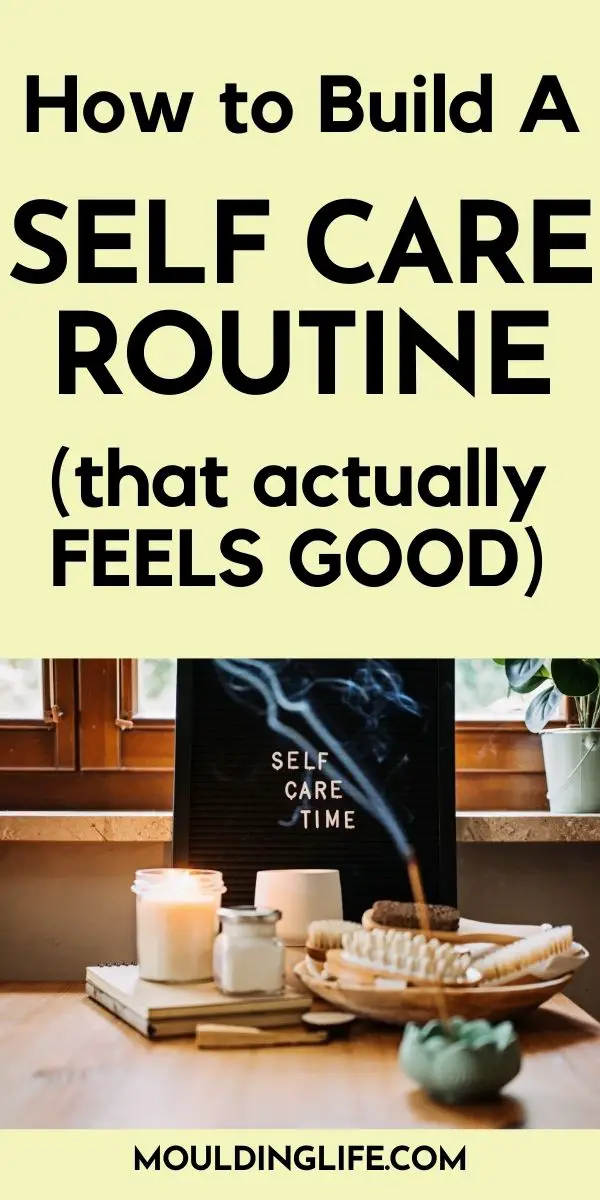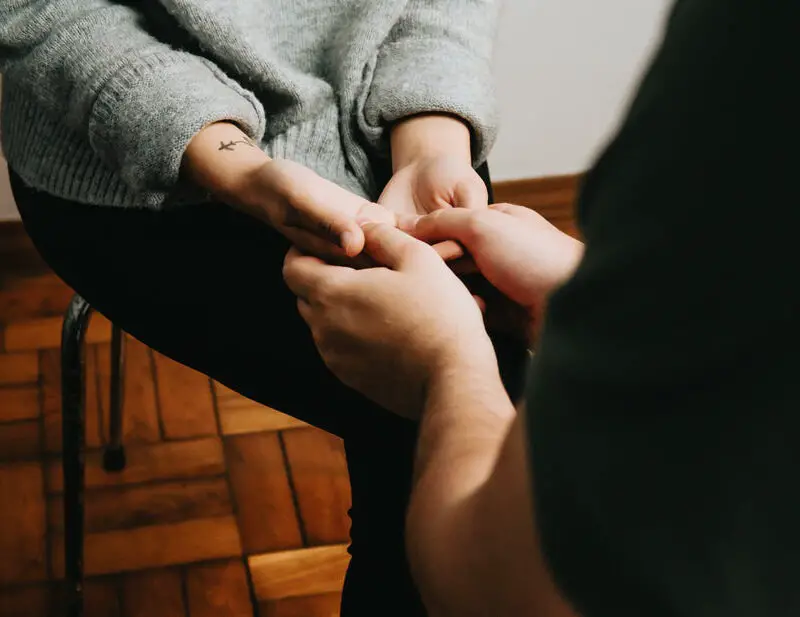
For years, I have struggled with practicing self care.
My self care routine has been rigid. Always.
Read for 20 minutes before going to sleep, walk for 15 minutes, journal for 10 minutes.
This works on normal days.
But what about the days when I am sick or in a bad mood or when something unexpected happens?
These are the days when self care should be non-negotiable.
The exact opposite happens. Self care takes a back seat.
For me self care was another thing to be ticked off from my to do list. It was something to be done because the internet said so.
I realized that my approach to self care is wrong. Sadly, after following in this path for so long.
Slowly, I understood what are the mistakes I am making.
Self care isn’t about perfection, or sticking to the same set of activities.
It is about being in tune with yourself and doing things that matches your energy.
And that only happens when you create a routine that works for you, not one that works for someone on Instagram.
This post is about exactly that — how to build a self-care routine that’s realistic, flexible, and truly nourishing.
Step 1 – Identify Your Needs and Energy Levels
Before you start practicing self care, you need to know your current state.
Which areas of life have you been neglecting? (Mental, physical, emotional, social). Why do you feel this way?
If there are many areas that require attention, prioritize one area.
It is tempting to start working on all areas. Then only it’s progress, isn’t?
No. Absolutely wrong.
Focusing on every area together means chaos. You are just gonna get overwhelmed and make a mess.
Progress happens step by step.
You also need to recognize your energy patterns. Are you a morning person or night owl? What time of the day are you most energetic?
Why is this needed? So that you choose self care activities that aligns with your energy levels and needs. You will not be blindly following the internet.
Choosing the right activities will help to truly enjoy your self care routine. It will be easier to stick to it.
➡️Here are 75 Life Changing Self Care Journal Prompts that will help you identify your needs and energy levels
Step 2 – Choose Self Care Activities that Fit Your Lifestyle & Personality
Let’s be honest here.
How much time can you realistically dedicate for practicing self care?
You might have a busy schedule. Working more than 8 or 9 hours per day, plus commute and household responsibilities.
1 hour self care routine might not be possible for you. You might even struggle to put in half n hour.
That’s ok.
Self care isn’t something that needs to be done for hours in a day.
A quick 10 minute stretching or reading, 5 minutes meditation or one sentence journaling – all of these can have profound positive effects.
Choosing the self care activities also depends on your personality.
Are you an introvert or extrovert? Do you like spontaneity or structure and plans?
Make sure to choose activities that align with your personality.
Hit the gym if you like being outdoors and connect with people. Exercise at home if you enjoy being alone.
👉Related Post: 60 Simple Self Care Ideas for Your Overall Well Being
Step 3: Create a Flexible Self Care Routine
Self care should not be seen as a task. Another thing to be ticked off your to do list.
You need to make it flexible so that it fits your schedule.
Some days you might be too busy. On other days you might not even have the energy to get out of bed.
On these days, you shouldn’t feel like you HAVE to do self care.
You will feel this way if the self care activities are too rigid or time consuming or doesn’t match with your interests.
It’s is best if you make self care flexible so that it fits your schedule and energy levels.
So how can you do this?
- Design daily, weekly and monthly self care routine.
Self care isn’t something that you do when you are burned out. It is done so as to prevent or reduce burnout and stress as much as possible. That’s why it is important to develop a proper self care routine.
- Daily routine:
Do small simple activities that help you relax and keep you balanced.
Setting boundaries by saying no, drinking enough water, eating healthy food, 10 minutes stretching.
- Weekly routine:
You will have more time to spend on weekends. Do things that will replenish your energy.
Go for brunch with friends, enjoy a long bubble bath, do digital detox for a few hours. Do things that can’t be done typically on a regular day.
- Monthly routine
Spend some time every month to do activities to reflect and reset.
Go for solo dates, do monthly reflections, schedule time for decluttering.
b. Make self care feel natural, not forced
If you feel like it’s something you have to do rather than enjoy doing, it’s not going to be sustainable.
Here is how you can enjoy self care
- Integrate into existing habit:
Do you drink morning coffee? Read a book after drinking coffee or do a quick meditation before. This will not make you feel like you are doing something from scratch.
- Choose what feels good, not trendy
The internet is obsessed with self care. Someone does something and it breaks the internet. Suddenly, everyone is blindly doing the same.
Self care is for the mind, body and soul. It is to make you happy and healthy.
So, choose what to do accordingly.
It might be just observing people from your balcony or doing pottery or talking to your plants.
Anything that doesn’t feel like a task.
Step 4: Overcome Common Self-Care Challenges
You know that you should be practicing self care. But something is stopping you from it.
Its not just you, there are many who find it difficult to integrate self care into their life.
Here are some common challenges that might be the roadblock:
a. Guilt
I feel bad taking time for myself. I should be studying for my exam or finishing my project or do the house chores.
You might feel guilty for taking time for yourself. Especially, if others depend on you, or if you are a high achiever or empathetic person or people pleaser.
You are available to everyone all the time. Except for yourself.
The modern society has glorified productivity. Unless you aren’t doing anything that’s productive, it’s a waste of time.
That’s why rest and self care seems like useless and ineffective.
You should always put others needs ahead of yours. If you have a responsibility to take care of others, you might have heard this a gazillion times.
There is nothing wrong with taking care of others or helping people.
It’s just that you can’t do it from an empty cup. You will drain out and the quality of care will decrease.
So how to overcome this feeling of guilt:
1. See self care from a new perspective: Recognize the importance of self care. How it will help you to take care of yourself and others.
2. Start small: 15 minutes. That’s it. Start by spending 15 minutes doing things that you enjoy.
3.Practice affirmations: Repeat truths like “Rest is productive.” “My needs matter.” “I deserve care too.”
4.Set boundaries: Learn to say NO, respectfully.
b. Consistency
You might be struggling to stay consistent with practicing self care.
Lack of time and doing things that you don’t like are the main 2 reasons.
Starting small and doing things you truly enjoy are the solution for this. Just as mentioned before.
c. Lack of Motivation
”I don’t feel like doing it.”
You might have felt this, especially when you are having a bad day and low on energy.
So, what can be done on such days?
1.Pre-decide what to do on bad days: Have a go-to “bare minimum self-care kit” for low-motivation days. Example: drink water, go for a 5-min walk, journal 3 lines. That’s enough.
2.Treat self care as maintenance, not mood: You don’t wait to be in a good mood before brushing. You wake up and brush everyday, no matter what. Treat self care just like that. It is something to be done everyday. No matter what.
3.Create rituals, not just routine: Turn self care into somethings that boosts your mood, immediately. Light a candle, play music and just breathe.
4.Use the 5 minute rule: Tell yourself you can stop after 5 minutes. Getting started is the most difficult thing to do, most of the time.
5.Lower the bar. A LOT: Instead of “go for a 30-minute run,” try “put on shoes and step outside.” Momentum often builds after the first tiny step.
Step 5: Test and Adjust Your Routine
Creating a self care routine is not setting up a perfect set of things to do – no matter what. It is something that should work for you, in this season of life.
That is why it is important to test and experiment with different self care activities. Testing different things will help to prevent burnout and boredom, understand what works during different moods.
How to do this?
1.Start small and track: Choose 2–3 practices to test for a week. After each one, rate how you feel: energized, drained, neutral?
2.Look for patterns: What activities calms your soul and makes you happy? Which one drains your energy?
3.Have “core” vs “optional” practices: Sleeping for 7 hours, drinking minimum 8 glasses of water – these should be your core activities. Non negotiables. Optional are those activities that you can change according to your mood. Dance party on days when you are high on energy, journaling and reading for calmer days.
4.Do weekly adjustments: Do weekly reviews to check what went right, what can be changed, what to continue.
Make self care adaptable instead of rigid.
There is nothing wrong with making your self care routine flexible. If it bends, it doesn’t mean that it will break. That is the biggest strength.
Conclusion
Expensive products, hours of free time, perfect routine – these are not what makes a successful self care routine.
What you really need is self awareness – of your needs, energy, schedule. This will help you to practice self care consistently.
Self care is not a destination, it is a journey.
A journey in which you will honor your needs and build deeper connection with yourself.
Start small.
Be ready to experiment and adjust.
Most importantly, be kind to yourself.
You deserve it.
You might also like:
➡️15 Winter Self Care Ideas to Keep You Warm and Happy
➡️30 Self Care Quotes that Highlights the Importance of Taking Care of Yourself
➡️How To Fall In Love With Yourself Again – 15 Powerful Ways
➡️4 Easy and Powerful Ways to Practice Gratitude Daily
➡️75 Life Changing Self Care Journal Prompts for a Happier You
➡️50 Powerful Self Love Journal Prompts to Strengthen Your Worth
➡️30 Day Self Care Challenge to Reduce Stress and Recharge
➡️90 Fun and Creative Solo Date Ideas That You Will Love
➡️The 4 Week Self Care Reset You Can Actually Stick To





Leave a Reply